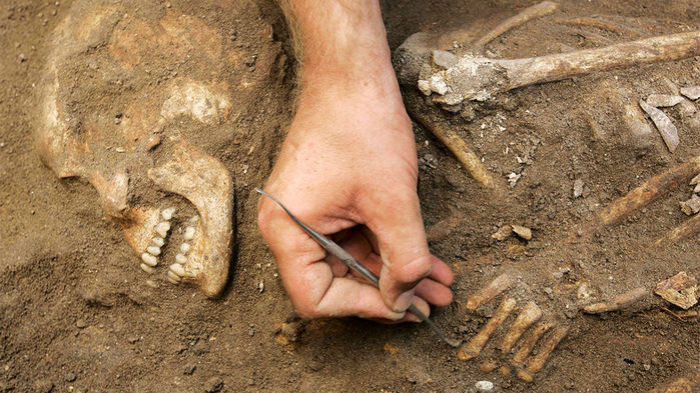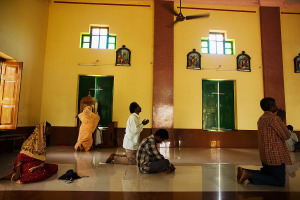Discovery of 3,600-Y-O Burial Chamber in Biblical Book of Revelation City 'Stuns' Archaeologists

Archaeologists say they are stunned by the discovery of a "magnificent and untouched" 3,600-year-old burial chamber in the ancient Canaanite city-state of Megiddo, which is mentioned in the book of Revelation in the Bible.
National Geographic reported Wednesday that the "extraordinary" find could offer potential clues into the royal dynasty that ruled the area south of Haifa, today part of Israel, before its conquest by Egypt in the 15th century B.C.
For nearly five millennia, from 3000 B.C. to 1918, Megiddo served as an important strategic pass for international military and trade routes, offering the stage for numerous historic battles.
It is described in Revelation 16:16 as a place called "Armageddon," which derives from Har-Megiddo, or "Hill of Megiddo."
Archaeologists now say they have discovered a tomb there from the 15th century B.C., when Megiddo was besieged for seven months by the forces of Egyptian Pharaoh Thutmose III, eventually surrendering. Thutmose III then moved to incorporate Canaan as a province in his empire.
Israel Finkelstein and Mario Martin of Tel Aviv University and Matthew Adams of the W.F. Albright Institute of Archaeology, who have been conducting excavations in Megiddo since 1994, first found a subterranean corridor near the Bronze Age palaces in the area leading to a burial chamber back in 2016.
The chamber contained the remains of three people, a man, a woman, and a child, who were adorned with elaborate gold and silver jewelry. The man had been crowned with a gold diadem, which suggested a high level of skill and artistry.
"We are speaking of an elite family burial because of the monumentality of the structure, the rich finds and because of the fact that the burial is located in close proximity to the royal palace," Finkelstein said.
What is more, archaeologists have found that other human remains had also been interred in the tomb at an earlier stage, following the practice of ancient funerary rites in the region.
Beside the jewelry, the undisturbed nature of the three bodies after their burial, in comparison to the others that were moved, gives credence to the theory that they were of high importance, according to excavation team member Melissa Cradic.
A DNA study of the bodies found buried in Megiddo is seeking to determine whether the common inhabitants of the Canaanite city-state are of the same background as the elite rulers.
The results could change perceptions on the populations of Canaan, as scholars have long believed that the Hurrians, a roving mountain people who emerged in the region in the fourth and third millennium B.C., could have played a big part in building the first cities in the Near East.
"These studies have the potential to revolutionize what we know about the population of Canaan, before the rise of the world of the Bible," said Finkelstein.
Human remains discovered at other ancient Canaanite sites have intrigued researchers as well.
Archaeologists revealed in July 2017 that the remains of an adult and a child were uncovered at the biblical site of Gezer in Israel. The victims apparently died some 3,200 years ago when a blazing building collapsed, and were buried under ash and mud-brick debris.
The discovery led researchers to confirm accounts by Egyptian Pharaoh Merneptah about how he laid siege upon and conquered Gezer, burning down many of its buildings in his campaign for control.




























